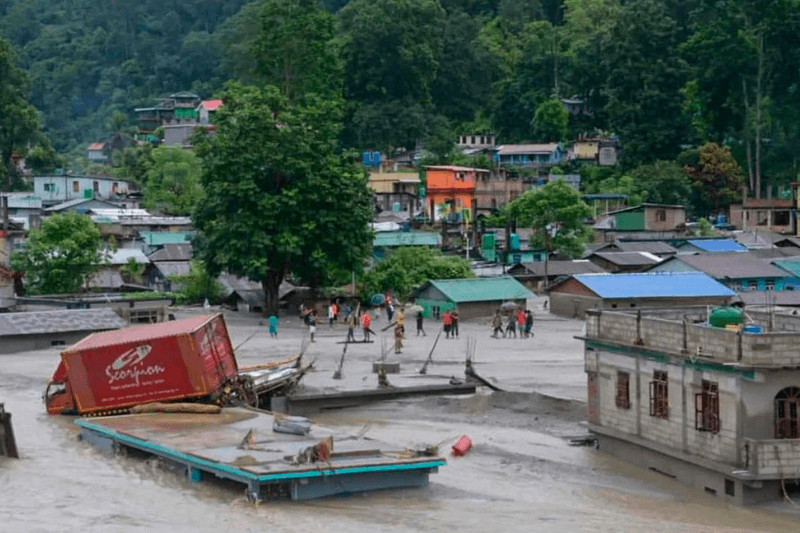
Check Out: Could Have An Early Warning System Averted Sikkim Disaster?
At least 40 people were killed, and an estimated 75 others remain missing, after the Lhonak Lake in the northeastern state of Sikkim in the Indian Himalayas overflowed on Wednesday after a cloud burst, triggering major flooding in the Teesta River.
It is one of the worst disasters in the region in more than 50 years and the latest in a series of extreme weather events that have caused widespread damage in recent years, blamed by scientists on climate change. The latest incident is known to have impacted at least 22,000 lives.
North Sikkim Remains Cut Off From Rest Of India
Scientists and government authorities were working on an early warning system for glacial floods which could have given people more time to abandon homes and flee if fully operational, officials part of the project told Reuters news agency.
While water levels have receded in some areas, Sikkim has been cut off from Siliguri in the neighbouring downstream state of West Bengal as the main highway that connects it to the rest of the country had collapsed. About 2,400 people have been evacuated so far.
Keep Reading
Sikkim is a small Buddhist state of about 650,000 people – wedged in the mountains between Nepal, Bhutan and China. The weather department said Sikkim received 101 mm of precipitation in the first five days of October, more than double the normal levels.
Photos and videos on social media showed roads covered with silt and vehicles stuck. More than a dozen bridges had been washed away, hampering rescue operations, the Indian government said. Nearly 1,500 tourists remain stranded.
Military Equipment Washed Away In Sikkim Flash Floods
Meanwhile, a defence ministry spokesperson has raised concerns over military equipment, including firearms and explosives, being washed away in the floods. One mortar shell was picked up by people in West Bengal which later exploded, killing one child.
The Lhonak Lake outburst was preceded by a series of earthquakes in Nepal, with tremors felt across large parts of North India. While scientists haven’t ruled out the impact of torrential downpours, they are also probing whether the quake had anything to do with the Sikkim




